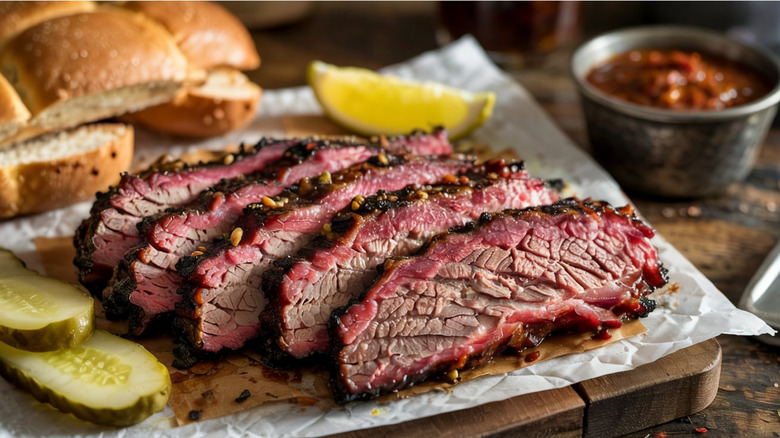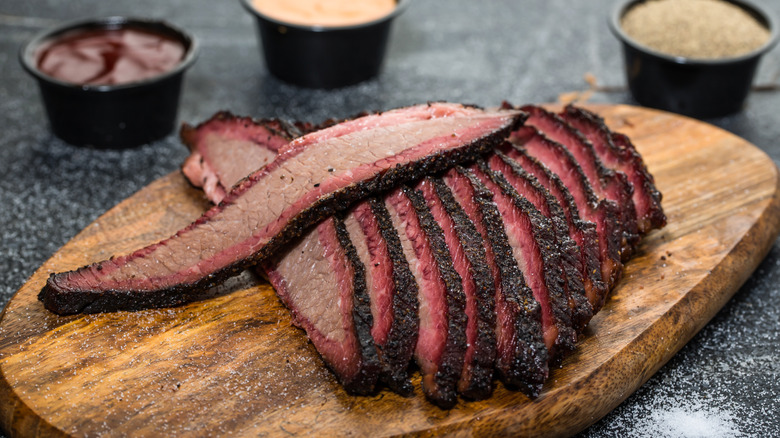What Is The 3-2-1 Rule For Cooking Beef Brisket, And Does It Actually Work?
When it comes to smoking ribs, the 3-2-1 rule all but guarantees quality. By smoking them for three hours unwrapped, two hours wrapped, then one hour unwrapped with a barbecue sauce glaze, you get a tender, moist, flavorful product almost every time. But misapplying this trick could ruin your brisket, according to Nicole Johnson, recipe developer and outdoor cooking expert at Or Whatever You Do.
"You can't really copy-paste 3-2-1 onto brisket," Johnson says. "It's not a rack with bones and uniform thickness. It's a big, uneven muscle that takes time to break down." The 3-2-1 method is great when cooking ribs because the same types of ribs, like spares or baby backs, have comparatively minimal differences in size, shape, and marbling. Brisket, however, ranges anywhere between eight and 20 pounds and comes in leaner flats, marbled tips, or "packers," where the two cuts are still together.
"That said, there is a wrapping phase, and it's usually around the [165 degree Fahrenheit] stall," Johnson continues. "Some people equate that to the '2' in the 3-2-1, but brisket is all about internal temp and feel, not timed phases. Trying to run brisket on a schedule like ribs usually ends in overcooked flat or underdone point." Many a barbecuer has made the mistake of trying to serve their guests brisket, only to discover it won't finish until well after they've left. If you cook brisket, be sure to consider all its characteristics when trying to time it properly.
Factors to consider when smoking brisket
Even veteran pitmasters who know how to factor in every last detail of any type of brisket struggle to guarantee it's ready at a specific time. "I always smoke by feel and temp, not clock time, with brisket," Nicole Johnson says. The art of brisket is patience, careful observation, and leaving plenty of time for it to rest before it needs to be ready.
"Fat content and marbling decide how forgiving your cook will be," Johnson explains. "A heavily marbled brisket can take more heat and longer time and still be juicy." This is one reason why packers — the cut used for the best barbecue — are so beloved. Aside from the standard exterior trimming, they're often packed with fat that gives them a wider window of staying juicy while developing the perfect texture. Plus, Johnson tells us that size and thickness are the biggest factors determining how long a brisket needs to smoke, so you should never treat a flat like a packer.
"Once it hits [165 degrees Fahrenheit] and stalls, I wrap, then cook until probe tender and jiggly in the middle, usually around [200 to 205 degrees Fahrenheit]," Johnson continues. "Then it rests, preferably for a few hours." It's around that 165-degree mark that a brisket's collagen converts into moisture, cooling the meat's interior until some evaporates. Wrapping ensures most of that moisture remains while trapping heat, keeping your cut nice and juicy as it reaches the perfect, jiggly temperature of 200 degrees Fahrenheit.


